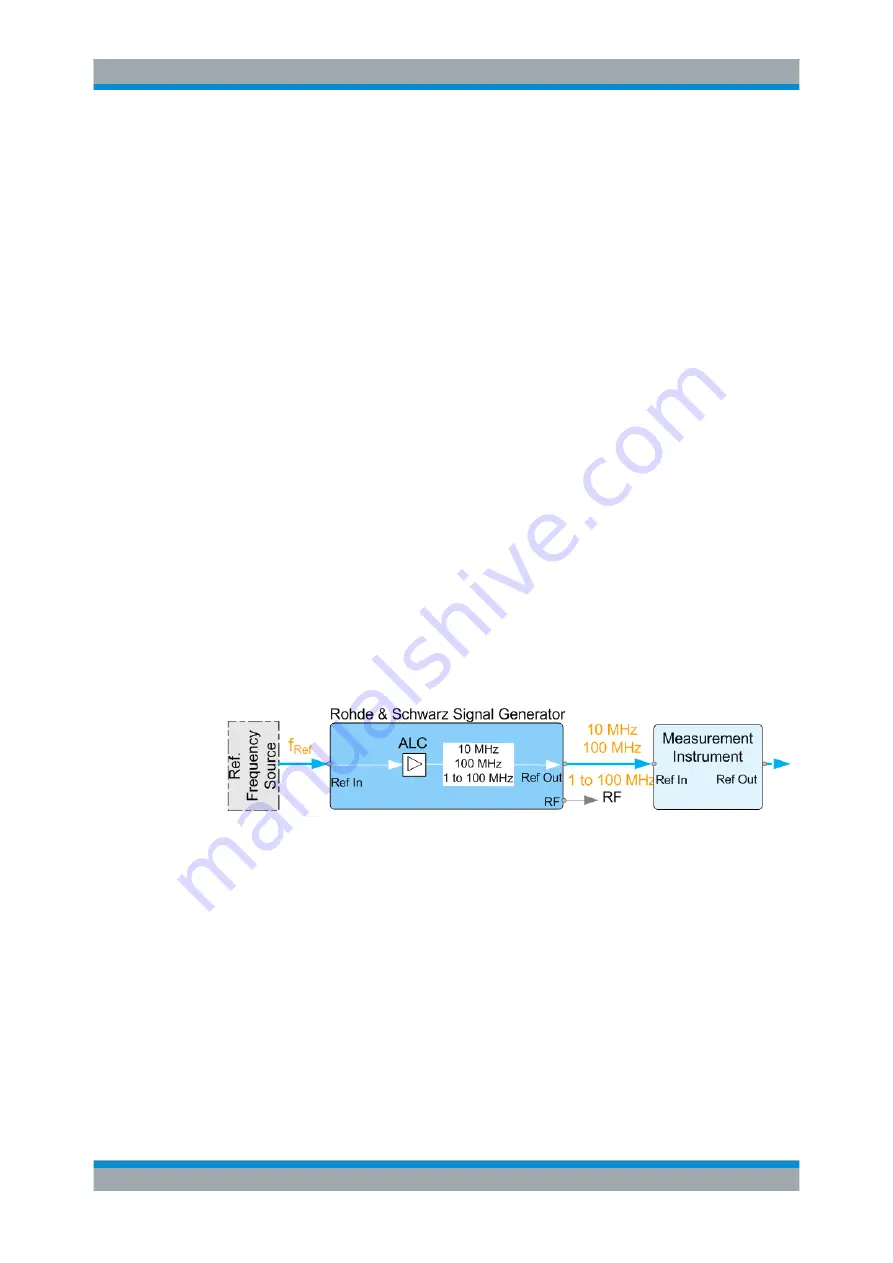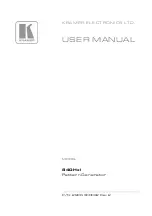
Reference Oscillator
R&S
®
SMA100B
177
User Manual 1178.3834.02 ─ 03
If the measurement requires higher PLL bandwidth, we recommend that you use
the external FM modulation (DC coupling) in low noise mode.
The FM-DC mode yields a fixed tuning sensitivity that is independent of the RF out-
put frequency and corresponds to the selected FM deviation.
Sharing the 1 GHz reference frequency to obtain phase-coherent signals
Compared to 10 MHz, a 1 GHz reference signal significantly improves the achievable
phase stability between two signal sources. Because the synchronization increases by
a factor of 100, the relative phase fluctuations between the sources can be reduced.
1 GHz at connector REF IN 1GHZ and 1 GHz at REF OUT 1GHZ
●
External f
Ref
= 1 GHz
●
= "External"
●
= "1 GHz"
●
= "1 GHz"
Using external reference source
If you have a clean external reference signal with 10 MHz or 100 MHz frequency for
example, you can
directly pass it to the output
. The signal quality remains the same.
10 MHz/100 MHz at connector REF OUT and REF IN
●
External f
Ref
= 10 MHz or 100 MHz
●
= "External"
●
= "10 MHz/100 MHz" or "Input Signal (loop through)"
●
Set the synchronization bandwidth according to the requirements of the applica-
tion.
Figure 7-2: Synchronizing instruments with a 10 MHz external reference signal
Ref. Frequency Source = e.g. Rohde
&
Schwarz signal analyzer
f
Ref
= 10 MHz/100 MHz/1 to 100 MHz external reference frequency
REF IN,REF OUT
= Connectors
You can forward any external reference frequency between 1 MHz and 100 MHz
directly to the output in the same way:
●
External f
Ref
= 1 MHz to 100 MHz
(
1 MHz to 100 MHz at connector REF IN and REF OUT
)
●
= "External"
●
= "Variable"
●
= current external frequency
●
= "Input Signal (loop through)" or specify the reference fre-
quency the synchronized instrument supports
Using the Reference Frequency for Instruments Synchronization
















































